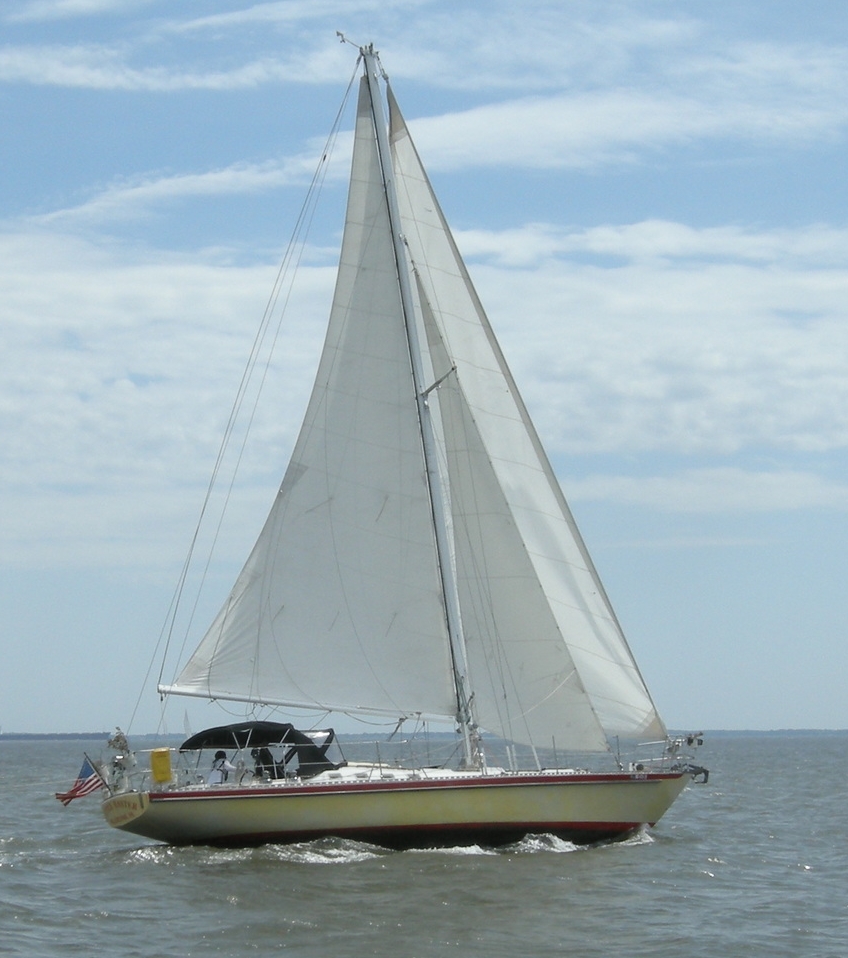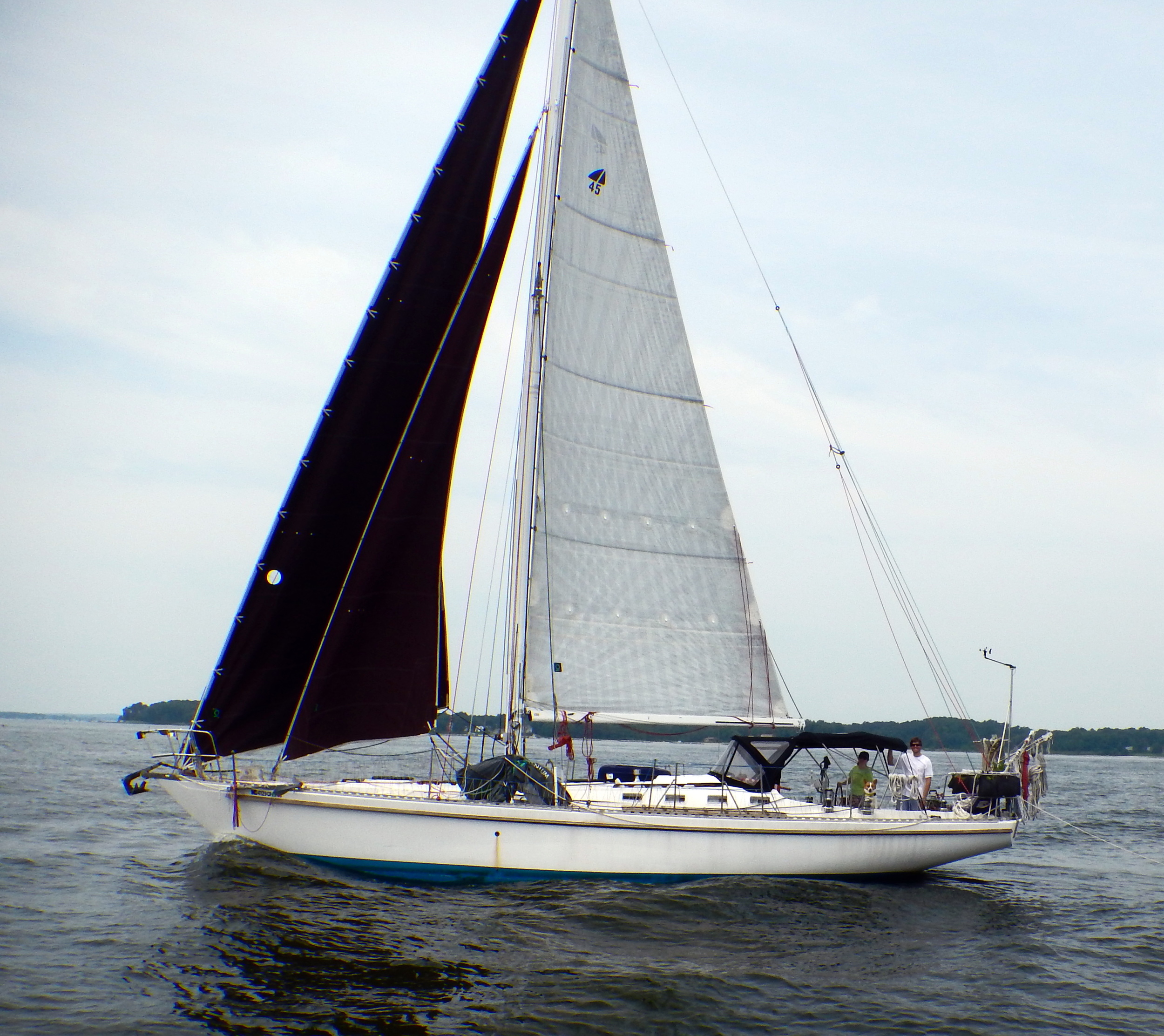Now we will look at the advantages of tanbark sails!
The advantages of tanbark are:
They are more visible in fog than white sails
They are not blinding to look at during the day
They are easily recognized
They don't show dirt
While tanbark sails are invisible by night, they are very visible during fog and haze during the day. White sails on the contrary will blend right in with the white background of the fog. While I do not suggest setting sail into a misty fog, I have had fog roll in on me while out in the bay. I was sailing blind, focusing on the chart plotter to make sure I was outside of the channel and far from any obstacle. The dark sails show up as high contrast and a tall beacon in fog, especially when topped with a masthead strobe light to maximize the chances of someone else seeing me in the fog to avoid a collision.
As stated before, the sails will not glow a blinding white that burns into your eyes. They sun makes them glisten a deep red on a background of deep burgundy. They are rather awesome sight to behold.
Another advantage is how easily recognizable they make the boat. When we were sailing under the Annapolis Bay Bridge, one of my friends happened to be driving over it and in the sea of sailboats down there was able to spot us. He gave me a call to make sure it was me and sure enough, we were going under the bridge at that moment. I doubt that would have happened if we had white sails just like every other sailboat.
The biggest advantage came into play with the radio communications. We would frequently heard large ships hailing a sailboat asking them to move and it always seemed that the sailboat in the way never thought they were hailing him.
"White sailboat with white sails, please move from the channel"
or
"White sailboat with white sails, you are entering a restricted area"
The captain probably thought the ship was hailing someone else and wouldn't respond. When he would respond much later, you could hear all sorts of bickering happening since quarters were closer. Time was more restricted and corrections had to be amplified since valuable time had been wasted.
When we would be hailed, we knew it:
"White sailboat with maroon sails"
or
"White sailboat with dark sails"
We would quickly respond and figure out what we each needed to do with miles of leeway, rather than a nail biting encounter.
Lastly, the sails don't show dirt! They are dark and any dirt that collects on them blends in with the color of the canvas. We even bathed our dog, Morty, in our jib. We had taken him to shore to do his business and let him run around. Being a corgi, all the mud that he kicked up while running covered his white belly turning it to a muddy tan. I didn't want the runoff going all over the deck, so I placed him in the sail and had the leech lay over the side of the boat so as I washed him, the runoff would go overboard rather than staying on deck and being tracked into the cabin. Never once did we worry about dirtying the fabric!
My old white sails had dirt bands from dirty water staining them when flaked, creating a stripped look to them. If they laid against the muddy anchor chain, they would become stained as it dried. It was a constant headache trying to keep the sails looking halfway decent. There is a reason power boaters call sails "rags".
On an unrelated to actual sail properties note, tanbark sails is more common on cruiser boats. When you pull into a harbor flying tanbark, it's almost like flying a giant billboard telling everyone that you're a serious sailor.
The ultimate decision comes down to your preferences. What fits your budget, desires, and plans. I wanted tanbark sails because I think they are pretty. All the other points have been bonuses, but they were not a priority for me. I am very happy with them and love how they look, hide dirt, and are easy to look at; but in the end, it is your boat and your choice.
Which sails do you prefer? Let me know in the comments section and don't forget to subscribe down below.








